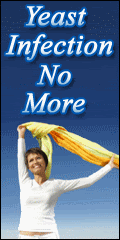Surprisingly, many women are asking this question. Why is this such a common question? 75% of all women suffer from vaginal yeast infections and they're searching for answers and solutions to the problem.
The answer to the question lies in understanding the symptoms and effects that a yeast infection have on the female body. Symptoms include: itchiness or redness of the vagina and vulva; a thick white, creamy vaginal discharge; and discomfort and/or pain during sex.
If you've had a yeast infection I don't need to spend any time telling you that vaginal itching from a yeast infection can drive you insane. The discharge that accompanies the infection irritates the skin and causes it to itch constantly. It's the most tormenting itch that you can experience and the worst part is that it can effect every area of the vulva.
It is extremely difficult not to continuously scratch or rub something abrasive on the skin in an effort to get some relief. Here is where additional problems begin. The constant scratching or rubbing irritates and sometimes breaks the skin. When it begins to heal the skin may develop scabs and that is the rough feeling that many women feel in the outer vulva area.
If you are experiencing the itching near the vaginal opening or if your scratching is covering that area, you may be breaking the skin and in the healing process, it may feel rough.
Now there are other conditions that can cause vaginal itching and roughness. Dermatitis is the most common cause of chronic vulval symptom. In some cases, vulval dermatitis can be caused by a genetic predisposition to allergies and hypersensitivity. Similar to a yeast infection, the initial symptoms will be the itching followed by the scratching. However, the difference is with dermatitis there is no discharge.
If you are one of thousands of women asking the question "My vaginal opening feels rough, could it be a yeast infection? There are four easy, self tests that you can do in the privacy of your home that will answer your question.
1. Make a list of your symptoms. A yeast infection will not only have the itching, you will have the discharge and a strange odor.
2. Make note of your habits. Have you been scratching in the area that feels rough so that the skin could have been broken. If so scabs may have formed.
3. Check the appearance of your underwear or pajamas. As a result of scratching, many times if the skin was broken you will see small spots of blood.
4. Perform a simple self exam by touching the area after cleansing and drying the area. Does the skin feel rough or does it feel like there are scabs on the skin.
If you have recently treated a yeast infection and still have the rough skin remember that it can take some time for symptoms to resolve as the skin of the vulva generally takes longer to heal than in other areas of the body.
If you suspect that you have a yeast infection don't just treat the symptoms. Find out what you need to do to permanently cure the cause of the yeast infection or it's highly likely that it can reoccur.
What are the best natural cures for yeast infection?
Click Here to take control of your health, get rid of yeast & the root causes in the privacy of your home using this proven step by step all natural system.
Reprinted with permission from Jess Alexander


